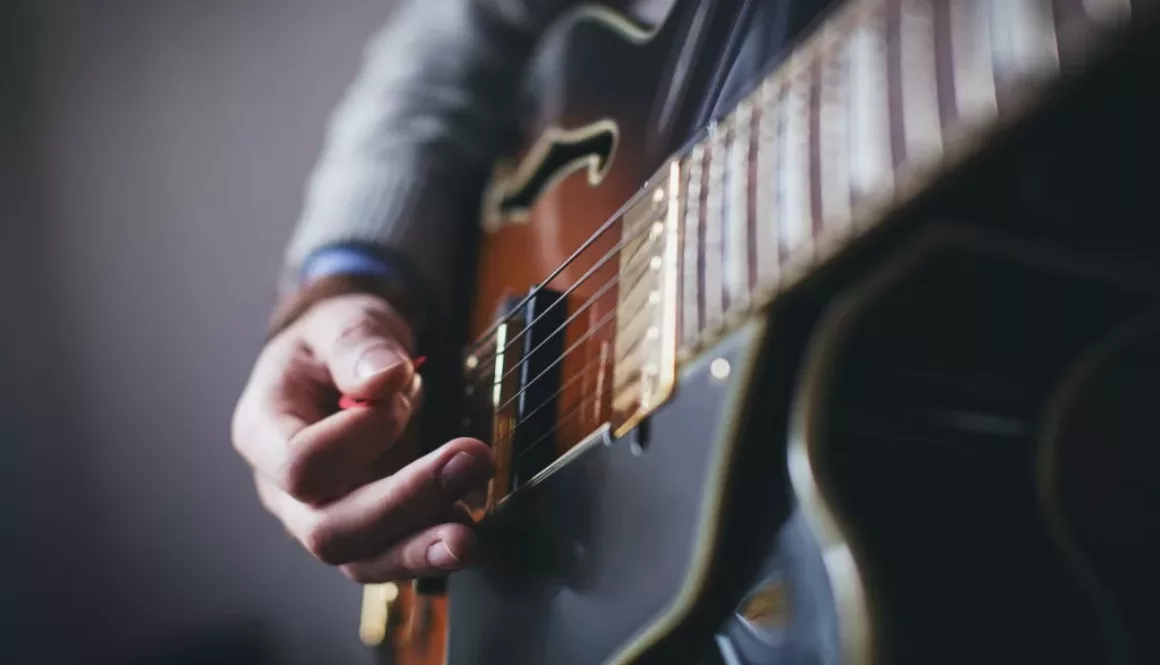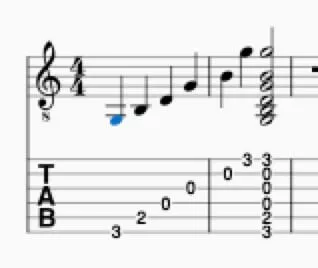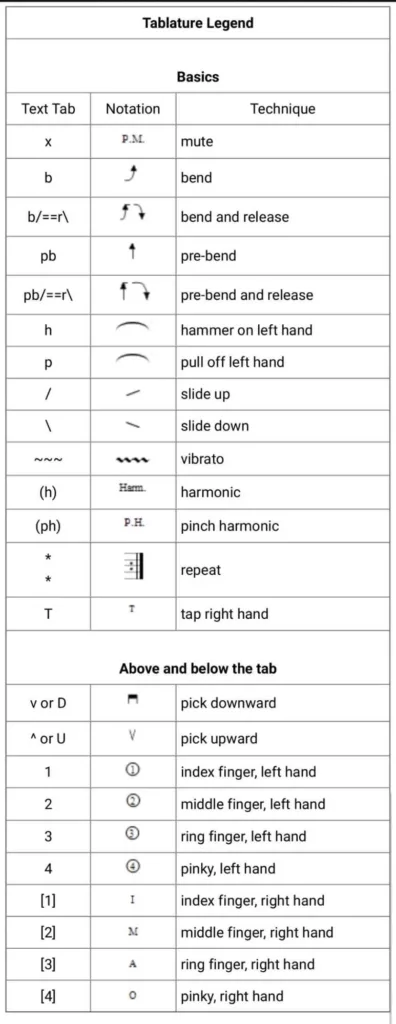How To Read Guitar Tabs

Sheet music shows us the pitch and length of a note along with other important musical info, but it is also complicated to read for most beginners. One way to fix this problem is to use a musical notation that is easier to read. Tablature or tabs is a numbering method that tells you where on the fretboard to play and is used for many different instruments. Here are some of the basics on how to read guitar tabs.
What Is Guitar Tablature
Let’s start with a basic question: what are guitar tabs? Tablature is most commonly seen with ukuleles, mandolins, banjo, harmonica, and of course guitar. Most students learn how to play guitar songs with tabs so they are some of the most prevalent lessons out there. Unlike sheet music the point of tablature is to just show us where to put our fingers, so we still need to know how the song sounds. The best way to study guitar tabs is to play along with the tune you want to learn while you are reading the tabs.
Vertical lines will show you the tuning, the horizontal line shows the string that is picked, and the number will be the fret used. Normally we assume the guitar is in standard tuning unless otherwise stated. Pretend the guitar is laying down flat in front of you with the headstock to your left, the fretboard is the same as the tabs that you see.
E - - - - - -
B - - - - - -
G - - - - - -
D - - - - - -
A - - - - - -
E - - - - - -
The low bass strings are at the bottom of the tab and the high treble are at the top, sometimes the high E is labeled as a lowercase ‘e’. Occasionally guitar tabs are refined and separated by measures, but usually it is just the fret number and string to be played. This makes it simple for beginners but it also may cause problems with not knowing rhythm and specific details.
If the number says 0 then we simply play the open string, any numbers after that show the fret that is to be played. Once we get past 12 we are an octave up and at the higher end of the fretboard, just remember this system is one of the easier ways to show us where to play!
How to Read Guitar Tabs
Let’s get into the best guitar lesson online for learning to read tabs. Form an open G chord on your guitar and pluck each string from low to high and then strum the full chord. This is what that would look like in tabs.

Most tabs for guitar will not have any note length like here, but it’s good to get used to paying attention to how long each pitch is. When we play single notes on tablature there is one successive number after the next going from left to right. However when we play a chord they are all lined up as shown above, sometimes the tabs are made very crudely like this.
E - - - - - - - - - - - - - - - 3 - - - - 3
B - - - - - - - - - - - 0 - - - - - - - -0
G - - - - - - - - 0- - - - - - - - - - - 0
D - - - - - 0 - - - - - - - - - - - - - -0
A - - 2 - - - - - - - - - - - - - - - - -2
E 3- - - - - - - - - - - - - - - - - - - 3
Those both show the G major chord being played one note at a time and then strummed all at once. Whatever the number says you will place your finger at that fret on the appropriate string. The better the tablature is the easier it will be to navigate the song. Because tabs are often homemade it is normal to find different ways to label various techniques. Simple things like hammer ons, pull offs, and slurs are easily labeled as (h), (p), and (s).
E - - - - - - - - - - - - - - - - - - - -
B - - - - - - - - - - - - - - - - - - - -
G - - - - - - - - - - - - - - - - - - - -
D - - - - - - - -2p 0 – 2s3- - - - -
A - - - -0h3 - - - - - - - - - - - - -
E 0h3- - - - - - - - - - - - - - - - - -
Sometimes a slide or slur can also be shown as / for going up and \ for sliding down. (X) will mean a string is muted and (B) will show a bend. Text tablature will have a variety of ways to show what is happening while the better Tab notation will always have clear symbols. The more advanced the notation is it may label the note lengths and sometimes even the strum direction. Here are some common symbols you will see in tablature.

When you come across basic tabs it may be hard to read at first, look for any lyrics, chord changes, or other notes that may help you discern how to play them. There are tons of free tabs online and in older books, some are notated great, others are downright terrible! It’s good ear training for you in practice to find what works and what doesn’t!
(One reason websites are not too worried about the tabs being correct is because of copyright issues. If the song is 100% perfect there will be a takedown notice by the artist and company. So it is up to you the guitar player to find which songs need fixed.)
The Pros and Cons of Learning Guitar Tabs
The best way to learn to read guitar tabs is to find the music that you like the most and look it up in tab form. Play the song aloud on repeat and start to flesh out where the numbers go in the overall rhythm. If it is too hard then move to another tune, but once you find one that works keep it for later practice. Sometimes you will see tab text symbols that are different, if so look them up!
The main con of guitar tablature is the lack of info for what is happening in the song. If it is a user submitted tab then there is likely no measures, time signature, key, note length, or any details but each fret. In a way this helps you as a beginner because it forces you to listen for these other aspects, as you play tabs it trains your ears too!
One positive aspect is there are different computer programs to help write tabs, trying to create your own will give you a better understanding of how they work. These programs also show you the sheet music notes so you can start working on proper notation. Basically tablature is an entry into reading music if you keep studying your songs and expanding your knowledge.
Reading guitar tabs is a very simple process of putting the number at the right fret for the string shown. The difficult part is knowing when to play that note, the length, and any dynamics. It is essential to listen to the music as you are reading tablature so that you can pick up on the details that aren’t shown. Stick with simple music pieces at first and slowly look for more complicated tabs to grow your knowledge of the different symbols.
By Shawn Leonhardt for Guitar Tricks and 30 Day Singer
